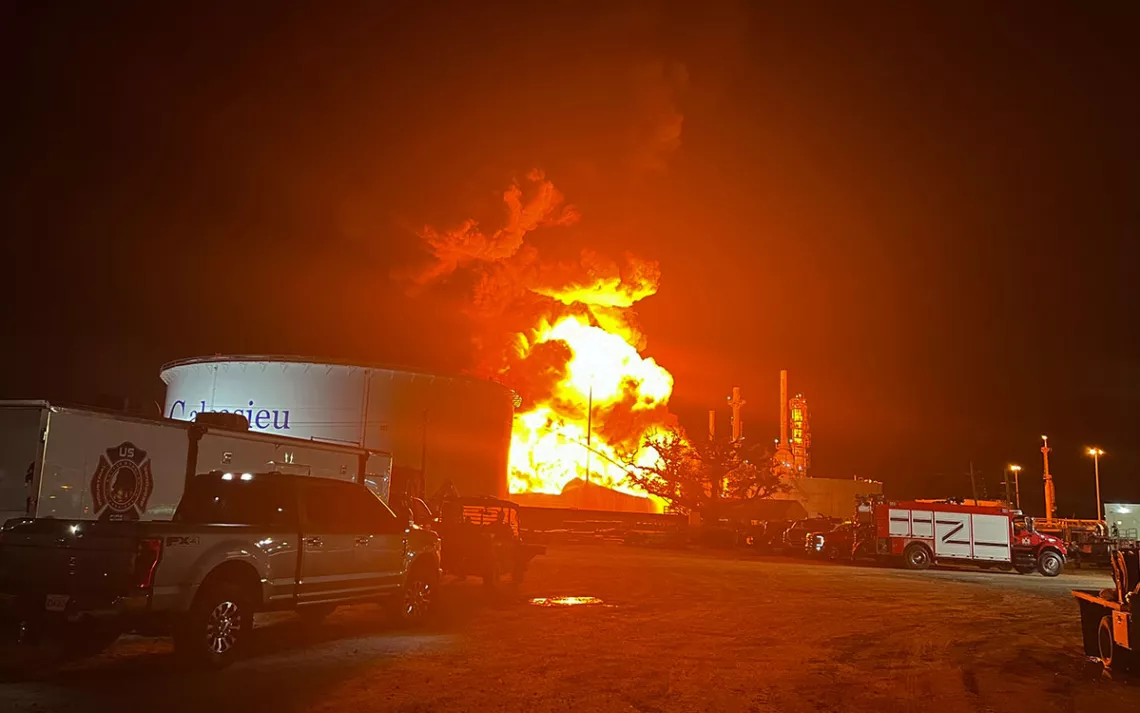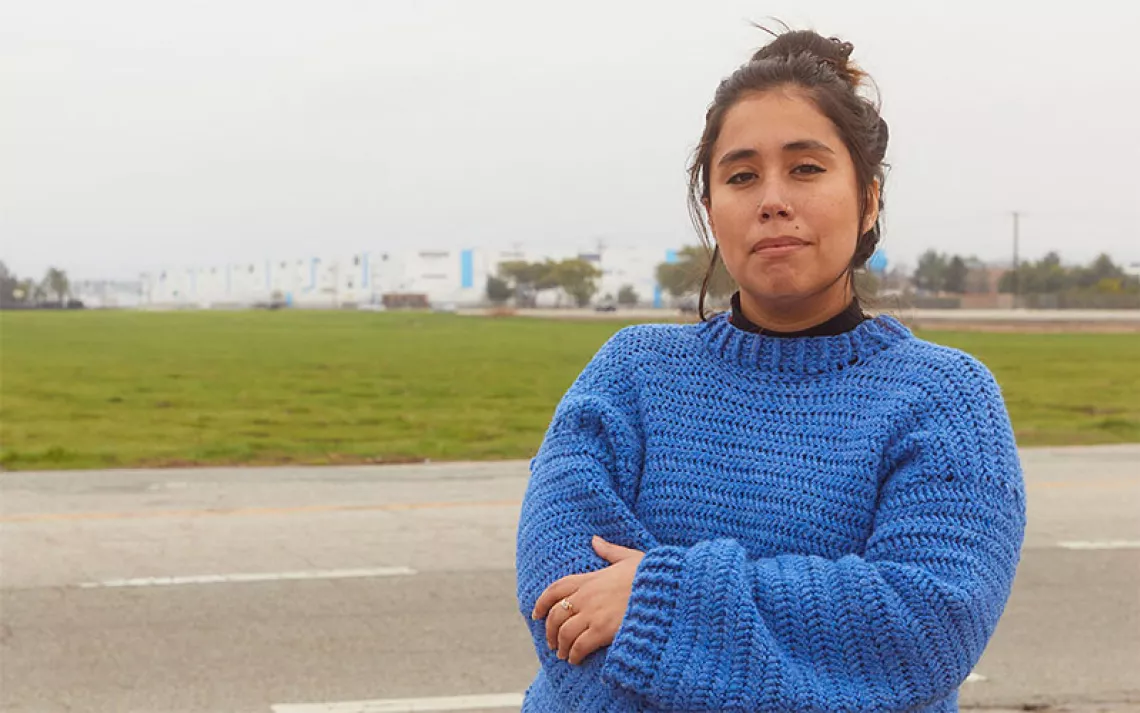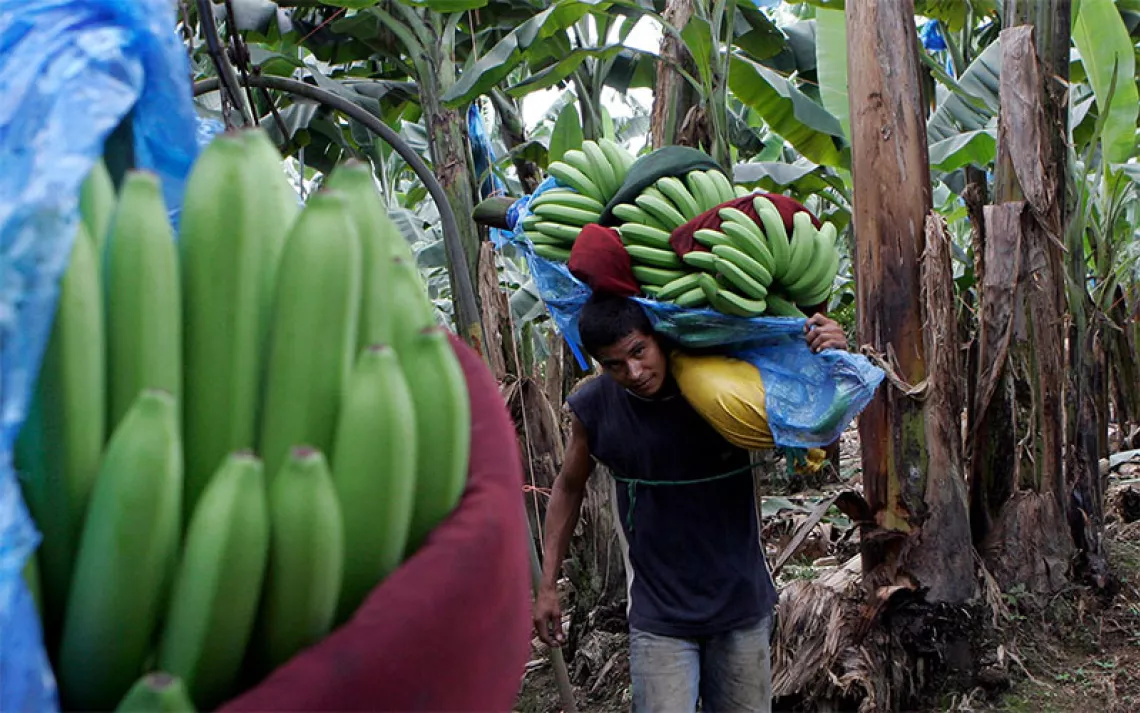New Fires, Familiar Injustice
For too many Americans, environmental damage is a part of their daily lives

A fire at a storage tank containing volatile naphtha in Lake Charles, Louisiana, on June 3. The fire is believed to have been ignited by lightning as storms moved through the area earlier in the day. | Louisiana State Police via AP
A lightning strike and a small fire are all it took this weekend to remind residents in south Louisiana—across much of the Gulf Coast really—that some people consider them disposable.
A thunderbolt reportedly hit an oil refinery in Lake Charles, causing a fire that sent up a toxic, black plume visible from 40 miles away and sparked an evacuation and a shelter-in-place order with a three-mile radius. It’s not yet known what exactly was released into the air or how much of it.
Fifty miles to the south, a blaze in Cameron at an electric substation fueled by liquefied fossil gas prompted an evacuation as well, including residents of several RV parks who said they weren’t aware they were living across the street from explosive gas tanks. Substations like the one that caught fire dot that part of the state, remnants of a power grid never fully rebuilt after Hurricane Laura.
Reporters covered both fires, but they weren’t really news to residents. With dozens of oil, gas, and petrochemical plants and pipes littering Cameron and Calcasieu Parishes and dozens more planned, it would be notable if lightning didn’t hit something explosive or an industrial fire didn’t demand an evacuation. An explosion at one plant and a fire at another just last year caused major pollution events.
It’s a story that’s familiar to many communities across the country—the ones in the cancer alleys along the Mississippi River, those that sit alongside coal-fired power plants that spew pollution that contributes to higher death rates. They are places that carry a disproportionate burden when it comes to the byproducts of our gas- and oil-fueled economy. It’s sad but apt that we frequently call places like this frontline communities, since their residents are at risk like the soldiers and sailors who so frequently are recruited from the same places.
What these communities have in common is that they are where people with the least economic and political power reside. They have people who have had to make an impossible choice between the air they breathe, the land they inhabit, and the water they enjoy, and putting food on the table. And they share the damaging consequences of bordering sites that spew pollutants as part of doing business.
“The stress these toxin-releasing events has on everyone living in this area causes mental and physical health problems,” Cynthia Robinson, a local faith leader who runs the Micah 6:8 Mission outside Lake Charles, said this weekend. “Those of us living here in an area where climate change has added to the magnitude and frequency of hurricanes add that burden also.”
The historic clean energy package passed by President Biden and Congress in 2022 includes $3 billion in environmental justice grants for communities like these that have borne an unfair share of the damage caused by fossil fuels and other chemicals. It’s an unprecedented direct commitment to those places.
More can be done even now. Louisiana residents have been pressing federal energy and pipeline regulators to do more to enforce regulations, starting with equipment and facilities being subject to more than self-inspection by the companies that own them.
As a nation, at moments when communities like Lake Charles and Cameron are on fire, we need to acknowledge that our continued reliance on fossil fuels is subsidized by the physical and mental health of other Americans. We have to ask ourselves why we let our neighbors make that kind of sacrifice when fossil fuel companies are making billions in record profits. We need to act on the reality that for them, environmental damage isn’t a far-off threat. It’s a daily part of their lives.
 The Magazine of The Sierra Club
The Magazine of The Sierra Club







